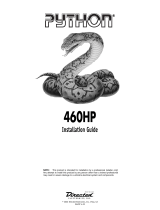
8
© 2011 Directed Electronics. All rights reserved.
Remote Control Programming
Remote controls included in this system are pre-programmed in the standard
button configuration, and are ready to use. This system will accept up to four
remote controls.
To add, delete, or reprogram remote controls with customized button configura-
tions, use the following procedure.
Important: Test the systems Ignition input, Door trigger input, Valet button,
Status LED, and siren for proper operation before proceeding.
1. Select a System Function and the required number of valet button presses,
as described in the following table. (see Function description table)
2. Open a door and turn the key ON (run position).
3. Press and release the Valet button to select the function. After pressing
and releasing corresponding to the function, then press the Valet button
once more and hold it. The LED flashes and the siren sounds to confirm
the selection.
4. While holding the Valet button, press the remote button that controls the
selected function. The siren emits one long sound to confirm program-
ming.
5. Release the Valet button to finish and exit programming, or to program
another function return to step 3 and continue through step 5 again (Ex-
ample: after programming ‘Arm only’, select ‘Panic only’ by pressing and
releasing the Valet button two times, then press and hold it). Repeat to
program more functions.
Exit Programming
The siren emits one quick chirp, and then another lengthier chirp when exiting.
Programming is exited if any of the following occurs:
• Turn ignition off
• Close the doors
• Press Valet button too many times
• 15 seconds or more lapses between steps
















